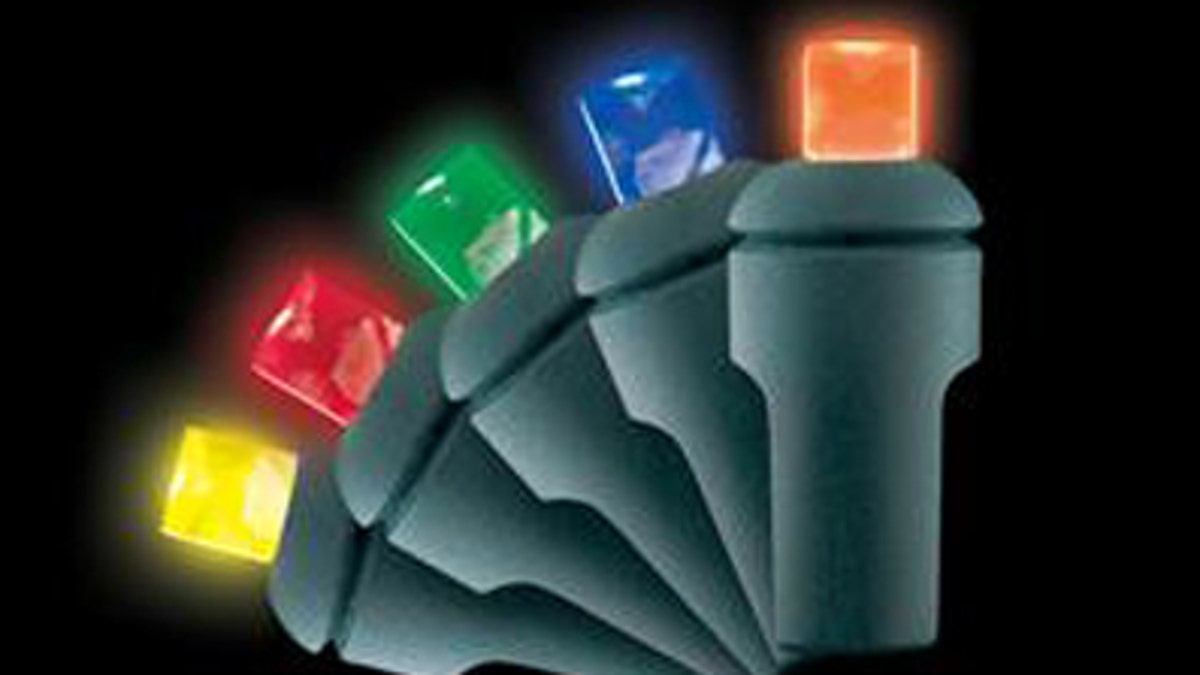
(LED Holiday Lighting)
If you're not yet familiar with LED lighting, it's time to illuminate yourself, lest you be considered an LUD (that's short for Luddite, a 19th-century English anti-industrialist, now synonymous with anyone who's way behind the times with technology). But don't worry; all you need to know about LEDs is that they're good lightbulbs. Better than incandescent, halogen and, yes, fluorescent.
LEDs happen to be ideal for decorative things like holiday lights, because they burn bright but cool, they last for a very long time and they cost very little to run. There's just one catch: LED lights are relatively expensive to buy. So the question we're addressing this holiday season is: Are they worth it?
What's So Great About LEDs?
Conventional holiday lights have become disposable goods. They're so cheap and so cheaply made that we expect to get about two seasons out of a string before cursing it and replacing it with another $3 set. And if you pay that little, you know you're getting the kind that are wired to go out entirely if just one tiny bulb has a problem. LED lighting should change all that. A good set of LED lights features "stay-on" wiring, plastic (not glass) bulbs, a three-year warrantee (see Don't Cheap Out, below) and an estimated 20,000 hours of bulb life. Compare that last number to Consumer Reports' finding incandescent holiday lights that started burning out before 2,000 hours. LEDs also use 70% to 90% less energy to run, and therein lies your best bet for a favorable ROI (that's short for return on investment, for any financial Luddites out there).
Figuring Your ROI
Chances are, you'll run your holiday lights for about a month, from sometime after Thanksgiving to sometime after New Year's. If your outdoor lights are on for an average of five hours per day, that's a total operating time of 155 hours per season. You can assume your cost of electricity is around 11 cents per kilowatt hour (a commonly used national average). Looking at two comparable strings of 100 miniature lights (produced by the same well-known company), the LED version uses about 8 watts per string; the incandescent version uses about 50 watts per string. Therefore, the LED string costs 13.6 cents for the season (8 x 155 = 1.24 kilowatt hours); the incandescent string costs 85 cents per season (50 x 155 = 7.75 kilowatt hours).
The LED lights would save you 71.4 cents per string, per season. If you have 10 strings, that's a total of $7.14 per year. Add to that savings the likelihood of LED lights lasting much longer than conventional lights and you'll see it's a good bet that LEDs will cost less in the long run. They're also guaranteed to be 70% to 90% better for the environment (not to mention that their longevity means less low-grade PVC plastic in the landfill).
Don't Cheap Out
If you decide to take the plunge this year and switch to LED holiday lights, it's a good idea to go with a reputable brand and, whenever possible, choose lights with the Energy Star label. According to the Energy Star website, decorative lights that earn the ENERGY STAR offer a three-year warrantee and are "independently tested to meet strict lifetime and electrical requirements." It's the lifetime testing you should be concerned with, because if CFL (compact fluorescent lamps) are any indication, poorly manufactured LED lights may survive only a fraction of their estimated lifespan.
Philip Schmidt is a Networx - http://www.networx.com - writer. Get home & garden ideas like this - http://www.networx.com/article/good-return-on-investment-led-holiday-l - on Networx.com.